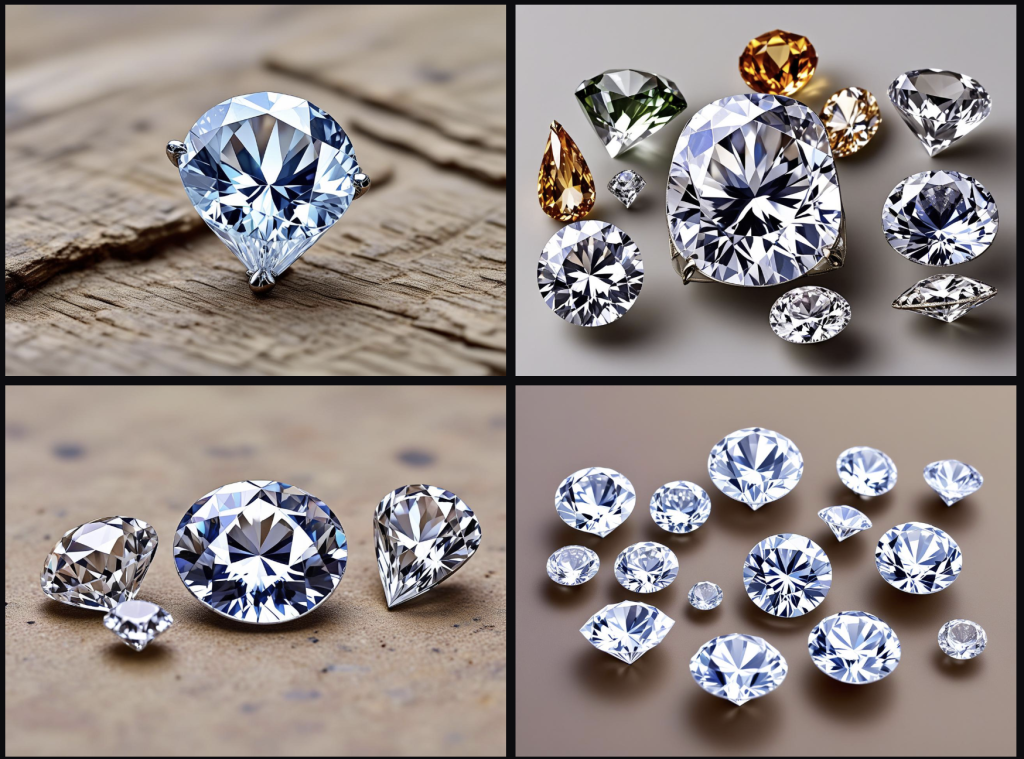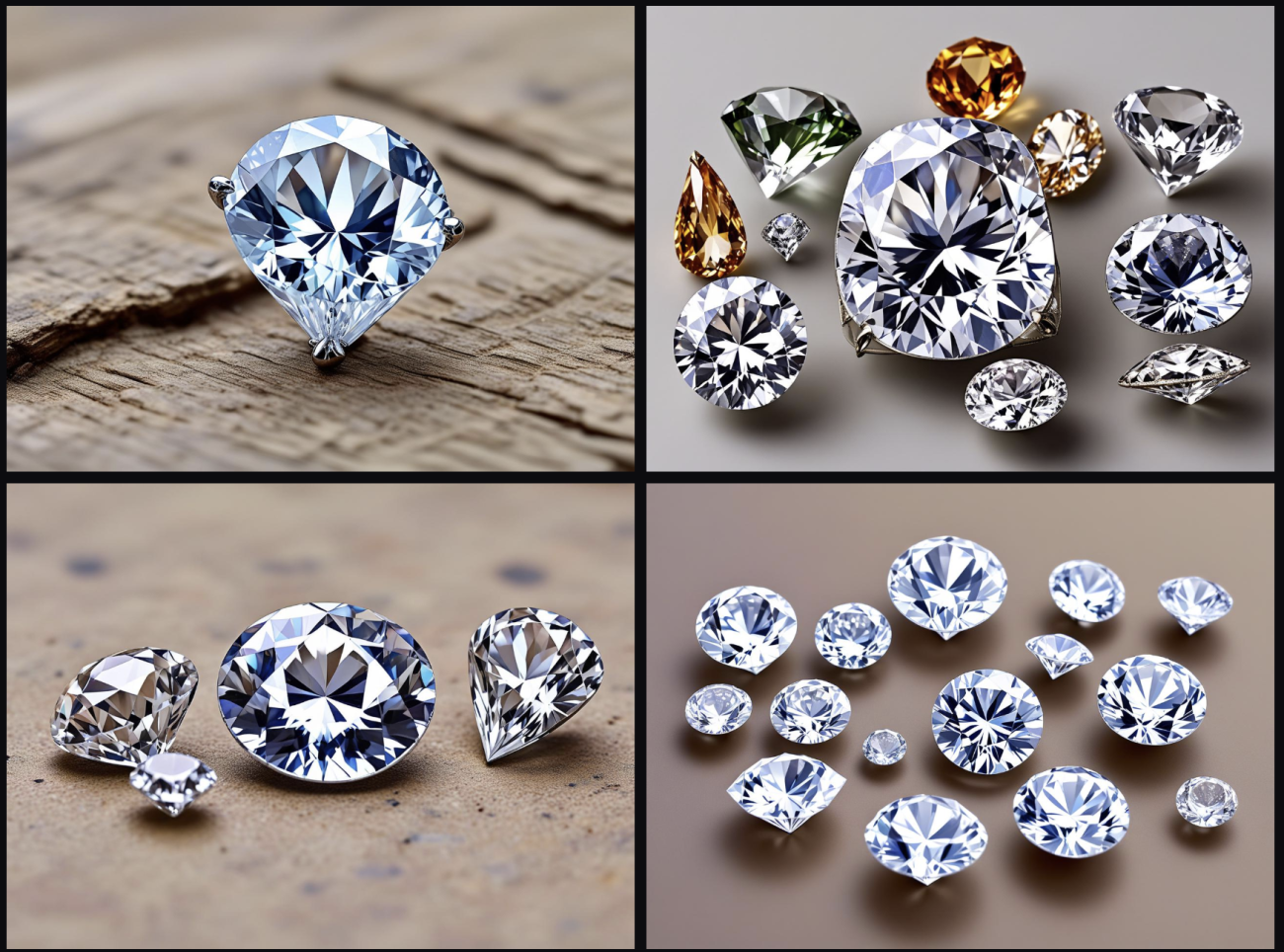As a precious gem, diamonds can be classified in various ways. The following is a detailed classification of diamonds from different angles.
Classification by formation method
Natural diamonds
Natural diamonds are naturally formed under high temperature and high pressure deep in the earth over a long geological period. They are formed in specific areas of the mantle and brought to the surface or near the surface through geological processes such as volcanic activity. Natural diamonds have unique crystal structures and growth characteristics, and each one is unique. Its formation conditions are extremely harsh, requiring a high temperature of about 1100-1500 degrees Celsius and a high pressure environment of 50,000-60,000 atmospheres, and the formation time is usually billions of years.
Laboratory-grown diamonds
With the development of science and technology, laboratory-grown diamonds have gradually entered people’s field of vision. It is a diamond artificially grown in a laboratory by simulating the formation conditions of natural diamonds. The main cultivation methods are high temperature and high pressure (HPHT) and chemical vapor deposition (CVD). The high-temperature and high-pressure method uses high-temperature and high-pressure equipment to provide an environment for the crystallization of carbon atoms; the chemical vapor deposition method decomposes carbon-containing gases under specific conditions, so that carbon atoms are deposited on the substrate and grow into diamonds. The physical, chemical and optical properties of laboratory-grown diamonds are basically the same as those of natural diamonds, but the formation time is greatly shortened, only a few weeks or months.
Classification by quality characteristics (4C standard)
Carat weight (Carat)
Carat is a unit of measure for the weight of diamonds, and 1 carat is equal to 0.2 grams. The weight of a diamond has an important impact on its value. Generally speaking, the heavier the diamond, the rarer it is and the higher its value. However, the value of a diamond is not a simple linear relationship with its weight, and it needs to be comprehensively judged in combination with other 3C standards. For example, a 1-carat diamond with good color, clarity and cut will be much more valuable than a diamond of the same weight but with poor other indicators.
Color
Diamond color is usually graded from D to Z. D is colorless and is the most rare and precious. As the color gradually deepens, such as E, F, G, etc., which are close to colorless, and K, L, M, etc., begin to show a slight yellow color, and the value gradually decreases. Colorless or near-colorless diamonds are more popular in the market because they can better show the fire and brightness of diamonds. Some diamonds with special colors, such as pink, blue, green, etc., are called colored diamonds, which are rare and extremely valuable.
Clarity
Clarity refers to the degree of internal and surface flaws in diamonds. During the formation process, diamonds may contain some internal inclusions, cracks or surface scratches. Clarity grading ranges from FL (flawless), IF (internally flawless) to VVS1, VVS2 (very slightly included), VS1, VS2 (slightly included), SI1, SI2 (visible inclusions), and then to P1, P2, P3 (obvious flaws). The higher the clarity of a diamond, the fewer internal flaws, the better its transparency and gloss, and the higher its value.
Cut
Cut is the only 4C standard that is affected by human factors. It includes the cutting proportions, symmetry and polish of the diamond. A good cut can make the diamond fully reflect and refract light, showing dazzling fire and brightness. The cut grading ranges from Excellent, Very Good, Good to Fair and Poor. Excellent cut can greatly increase the value of diamonds, while diamonds with poor cuts will appear dull.
Classification by use
Diamonds for jewelry
This is the most common use of diamonds, which are made into various jewelry such as rings, necklaces, earrings, and bracelets. In jewelry, diamonds are usually used as the main decorative element and are loved for their dazzling light and symbolic meaning of eternity. Diamonds of different qualities are used in jewelry of different grades, from ordinary styles for daily wear to high-end customized luxury jewelry.
Industrial diamonds
In addition to being used as jewelry, diamonds are also widely used in the industrial field. Due to its extremely high hardness and wear resistance, diamonds are made into various industrial tools, such as diamond cutters, diamond drill bits, diamond grinding tools, etc. Industrial diamonds play an important role in geological exploration, oil extraction, metal processing, stone processing and other industries. The quality requirements of industrial diamonds are different from those of jewelry diamonds. They pay more attention to their hardness and wear resistance, while the requirements for color and clarity are relatively low.
Classification by origin
There are many countries and regions in the world that produce diamonds. Diamonds from different origins may differ in certain characteristics. The origin also affects the value and market perception of diamonds to a certain extent.
Origin in Africa
Africa is an important diamond producing country in the world. Countries such as South Africa, Botswana, Namibia, and Angola are famous for producing high-quality diamonds. South Africa has produced many famous large-grain diamonds in history, such as the “Cullinan” diamond. Botswana is currently one of the countries with the largest diamond production, and its diamond production and output value are among the highest in the world.
Origin in Russia
Russia is also a major diamond producing country with rich diamond reserves, and its main production areas are located in Siberia. Diamonds produced in Russia are also of high quality, and some diamonds have unique characteristics.
Other origins
In addition to Africa and Russia, diamonds are also produced in Australia, Canada, India and other countries. Australia was once one of the important diamond producing areas, but its production has declined in recent years. Canada’s diamond industry has developed rapidly, and the diamonds produced are known for their high quality.
Classification by optical properties
Colorless and transparent diamonds
This is the most common type of diamond. It is colorless and transparent. It can transmit and reflect light well, showing the classic brilliance of diamonds. It is the most commonly used type of diamond in jewelry.
Colored diamonds
Colored diamonds are different colors, such as red, pink, blue, green, yellow, etc., due to the presence of certain trace elements or structural defects inside the diamond. Colored diamonds are very rare, especially some bright and rich colored diamonds, such as rich pink, bright blue, etc., which are priceless and are pursued by collectors and investors. The brighter the color of the colored diamond and the higher the saturation, the higher the value.
Diamonds are classified in a variety of ways, and each classification reflects the characteristics of different aspects of diamonds. Understanding these classifications will help us better understand diamonds, evaluate their value, and choose suitable diamonds according to different needs.
The above classification of diamonds is explained from multiple perspectives. If you want to know more detailed content under a certain classification, or have other related needs, you can tell me.

